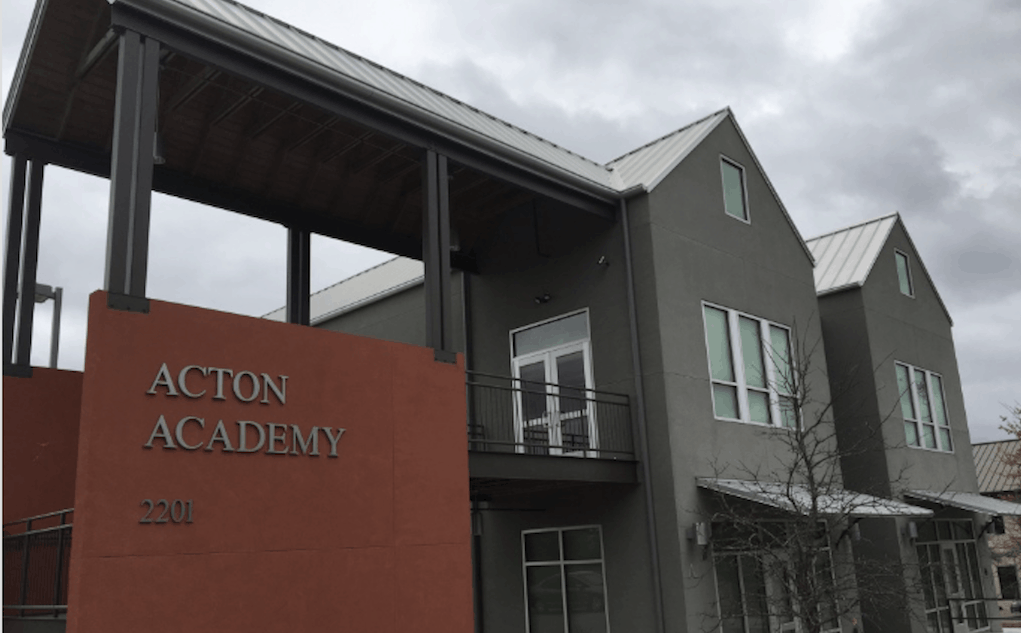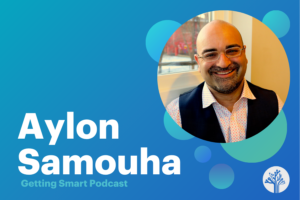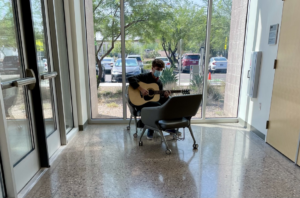Learner-Driven Communities

The idea of a more personalized approach to education has gained a lot of traction in the last decade. But there’s a lot of variation among those claiming “personalization.” Some are teacher-driven and prescriptive. In others, students are active in charting their course.
Jeff Sandefer, co-founder of Acton Academy, would like to propose a new category: learner-driven communities. This new category, suggests Sandefer features “extreme agency.”
Acton Academy (featured here) is a small K-12 private school in Austin with an audacious claim, “Each person who enters our doors will find a calling that will change the world.”
“At Acton we are seeing amazing leaps and effectiveness that I believe come more from agency than size or personalization,” said Sandefer.
The small school has spawned a global network with 91 affiliates in 28 states and provinces and 20 countries.
Replication is a lightweight franchising approach where “owners” pay a small fee to join the network and use the Acton brand. Almost all owners have students in the school. They agree to a common set of practices, keep a high “Net Promoter Score” (customer satisfaction scores) on published surveys and they all install Nest cameras that create a network-wide view of what’s happening in Acton schools.
Learner-Driven as a Core Motivational Theory
The core promise at Acton is that each student will “Begin a Hero’s Journey.” Through real-life challenges, “Our young people at Acton are learning that courage, grit, and perseverance matter far more than regurgitating facts,” said Sandefer.
“One of the keys to a learner-driven community is being willing to call on all sorts of ways of motivating individual heroes, squads and the tribe,” (i.e., learners, teams, school) said Sandefer.
Below is a chart that summarizes much of management theory for the last 100 years:

The following chart shows how Acton applies the theories with tools and incentives:
 Acton’s application of motivation theories + constraints
Acton’s application of motivation theories + constraints
The Acton goal, according to Sandefer, “is to ramp up motivation, amplified by constraints in the same way a river accelerates as it reaches a bottleneck, maximizing the learning, reflection, celebration or recharging in every moment.” Below is an infographic of the time in hours spent by badge/area/activity in Acton’s middle school. For scale purposes, one salmon colored Quest badge (upper left) is approximately 40 hours.
 The Learner-Drive Tribe
The Learner-Drive Tribe
Learner-driven is pretty descriptive but pretty rare these days. The Nellie Mae Education Foundation (NMEF) is a leading advocate for student-centered learning and they support language (“learners taking ownership”) that is pretty close.
Education Reimagined, an initiative of Convergence, uses language (“learners at the center”) that is similar but often more passive. The Shift Your Paradigm podcasts that Salisbury superintendent Randy Ziegenfuss does for them, does a good job of highlighting learner-driven experiences.
One Stone is a Boise nonprofit that supports learner-driven afterschool programs and a high school. The organization itself is learner-driven with a majority of board members being teenaged program participants (and they run the best board meetings we’ve seen).
The design principles of Mass Ideas, a statewide initiative sponsored by NGLC, Barr Foundation, and NMEF include students at the center, equitable, learning mindset, high expectations, personalized and learner-driven–which is defined as “Schools support all learners to understand why learning matters, take responsibility for their own learning and make decisions about their learning.”
Sandefer always starts a discussion about “learner-driven communities” by acknowledging adults play an important part in the lives of young people in providing inspiration, guard rails and natural consequences as role models, mentors, Socratic guides, coaches, sources of affirmation and, when appropriate, experts and legitimate authorities. Learner-driven, according to Sandefer, “doesn’t mean Lord of the Flies, but involves young people engaging with adults in even more interesting ways.”
In this new innovation economy, we’ve argued that building agency by engaging students in extended learner-driven challenges is the most important work in education. Acton Academy is one of the best examples. We appreciate Jeff and Laura’s boundary pushing leadership and this effort to clarify their unique approach.
For more see:
- Acton Academy: Building a Student-Centered School…And Global Network (podcast with Jeff Sandefer)
- Acton Academy: An Invitation to a Hero’s Journey (2014)
- Student-Led One Stone is Transforming Boise (podcast of student-led board meeting)
This post was originally published on Forbes.
Stay in-the-know with all things edtech and innovations in learning by signing up to receive the weekly Smart Update.








0 Comments
Leave a Comment
Your email address will not be published. All fields are required.